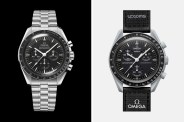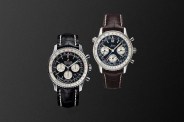Of all the watch complications out there — and there are a lot of them — the chronograph is perhaps the most useful. Essentially a separate stopwatch built into a wristwatch, chronographs can be used for timing all sorts of things. Historically, chronograph watches have functioned as invaluable tools for some of the world’s most daring occupations.
In the 1940s and 1950s, military pilots relied on chronographs to aid in their navigation. As some pilots became astronauts in the 1960s and ’70s, they kept the chronographs on their wrists, using them to time engine burns and to keep track of other mission tasks. Back on Earth during those same decades, chronographs were a fixture on the racetrack, used for timing laps and becoming a symbol of one of motorsport’s Golden Eras.
But even outside of chronographs’ most important duties throughout history, the watches have been a constant fixture. Some dress chronographs rank among the most beautiful watches ever made, with their practical functionality being an added bonus. Even today, while no longer considered an essential tool, chronographs can be handy in our daily lives, timing everything from lunch breaks to workouts to your kid’s nap.
There have been many significant and popular chronographs throughout history, but the 10 we’ve gathered rank as the most iconic ever made.
Omega Speedmaster
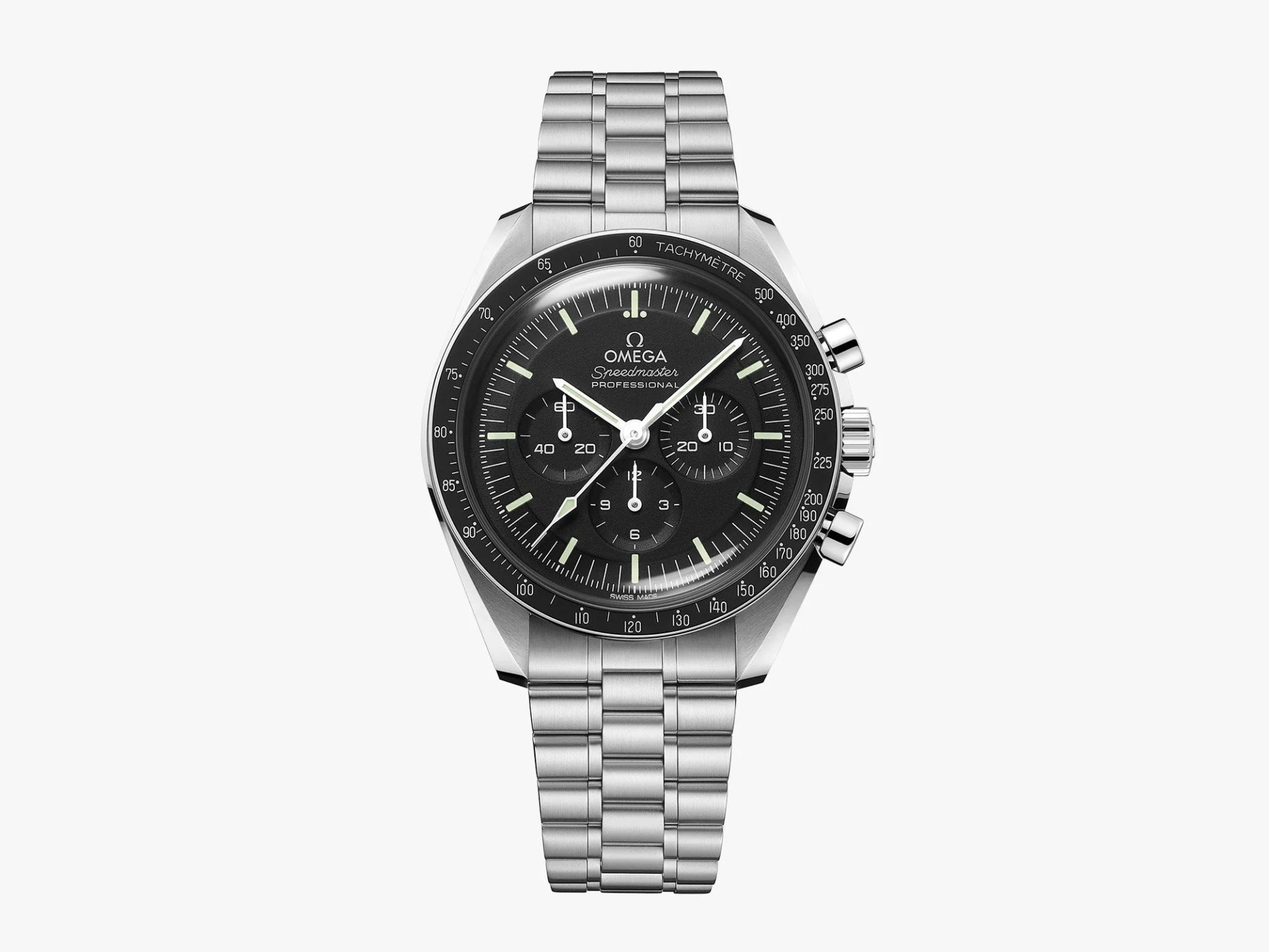 Hodinkee
HodinkeeOmega Speedmaster Moonwatch Professional
Specs
| Case Size | 42mm |
| Movement | Omega Cal. 3861 hand-wind chronograph |
| Water Resistance | 50m |
The most recognizable — and therefore, most iconic — chronograph in the world has to be the Omega Speedmaster. Specifically, the 42mm, black-dialed, manually winding “Professional” version that’s known as the Moonwatch. And the watch has some claim to fame.
While the original Speedmaster was released by Omega in 1957 as a motorsports watch (and as the first watch with an external tachymeter bezel), the watch’s greatest claim to fame came a dozen years later when Buzz Aldrin wore it on the surface of the moon during Apollo 11 mission in 1969. As the first watch worn on a surface other than the planet Earth, the Speedy has ultimate bragging rights.
Rolex Cosmograph Daytona
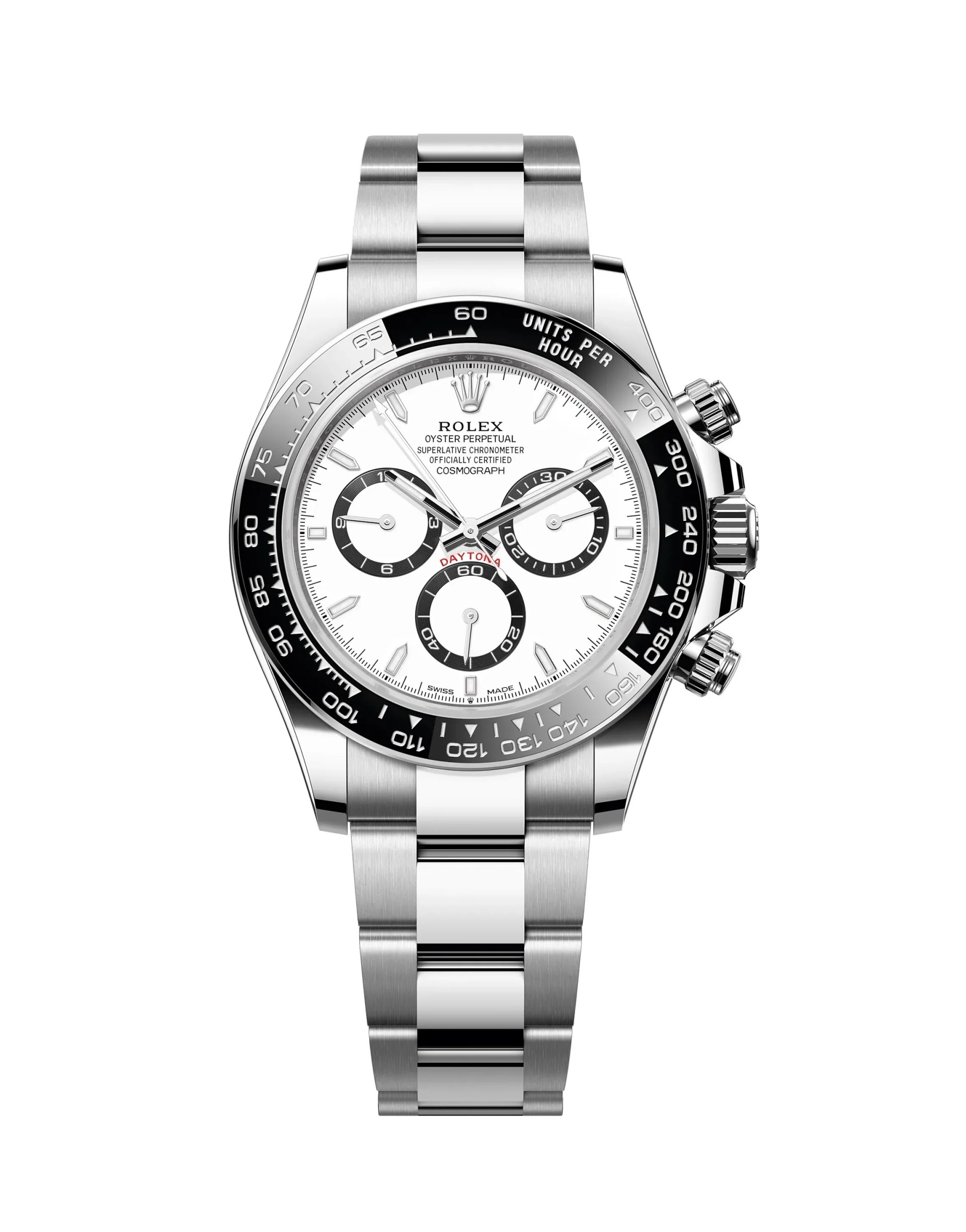 Rolex
RolexRolex Cosmograph Daytona
Specs
| Case Size | 40mm |
| Movement | Rolex Cal. 4131 automatic chronograph |
| Water Resistance | 100m |
While it is arguably the most in-demand watch model in existence today, the Daytona was considered a flop for the first few years of its existance. It debuted as a manually wound racing chronograph in 1963. 25 years later, it became an automatic by way of a Rolex-modified Zenith El Primero movement, and in 2000, the Daytona finally received a fully in-house movement from Rolex.
Soon after, interest in the Daytona exploded, initially driven by a thirst for vintage first-generation models with “exotic” dials like those worn by the late actor (and racecar driver) Paul Newman, which had a snowball effect on the modern stainless steel, ceramic-bezeled references, which have become practically unobtainable for prospective buyers.
Breitling Navitimer
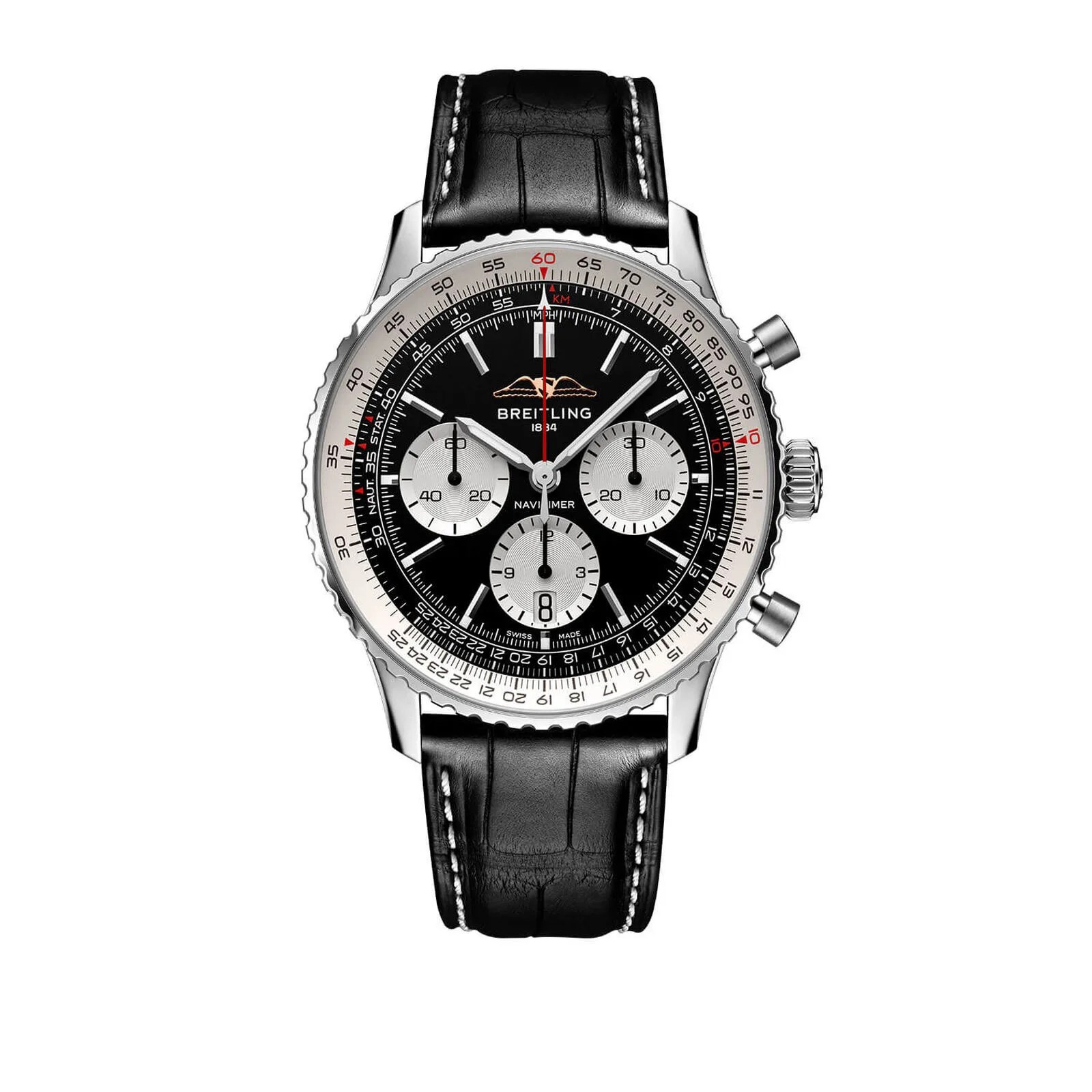 Breitling
BreitlingBreitling Navitimer B01 Chronograph 43
Specs
| Case Size | 43mm |
| Movement | Breitling Cal. B01 automatic chronograph |
| Water Resistance | 30m |
In addition to racecar drivers and astronauts, there’s another daring profession that has long found chronographs useful in their line of work: pilots. And when it comes to pilot’s chronographs, none are better known than the Breitling Navitimer. Debuting back in 1954, the Navitimer was the result of a request from the US Aircraft Owners and Pilots Association for Breitling to create a new type of tool watch for its pilots.
The result combined a chronograph complication with an innovative logarithmic slide rule bezel — now recognized as the Navitimer’s signature feature. When used together, the bezel and chronograph essentially functioned as a wrist-mounted flight computer, allowing pilots to calculate things like fuel consumption, average speed and the rate of climb or descent.
Zenith El Primero
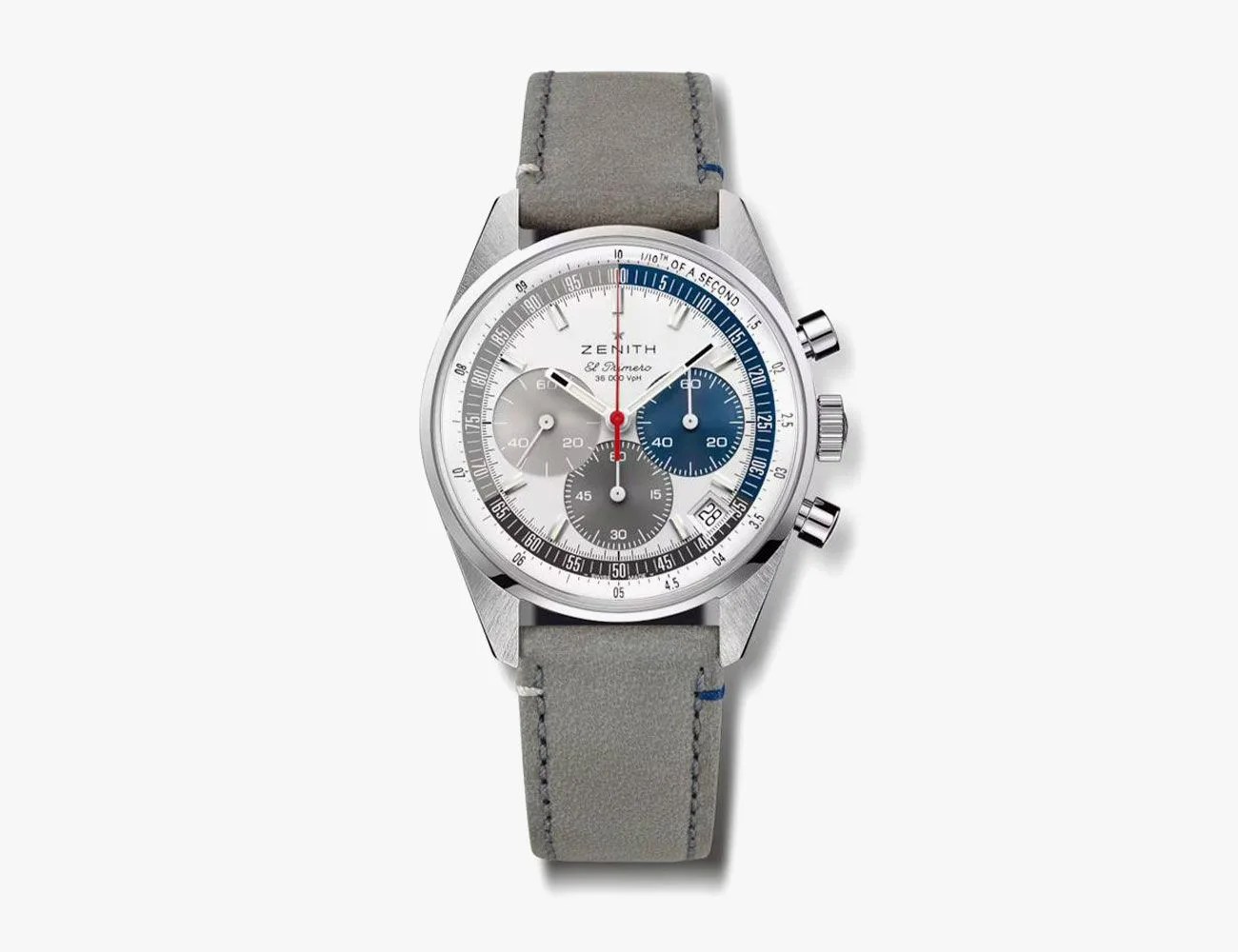 Courtesy
CourtesyZenith Chronomaster Original
Specs
| Case Size | 38mm |
| Movement | Zenith El Primero 3600 automatic chrongraph |
| Water Resistance | 50m |
In the late 1960s, a three-way race was heating up in the watch world. Independently of one another, Zenith, Seiko, and a multi-company consortium of Swiss brands led by Breitling and Heuer were all trying to develop the world’s first automatic chronograph movement. All three ended up debuting in 1969, and while there is some debate over who should be credited as “first,” Zenith arguably has the strongest claim with its January 1969 announcement of the El Primero movement.
The El Primero was also easily the most impressive of the three movements, as it was a high-beat (36,000vph), column wheel, fully-integrated chronograph. The movement found an iconic home later in 1969 in the Zenith A386, which debuted Zenith’s now-familiar tri-color subdials. The movement’s descendants are still found throughout Zenith’s catalog today, perhaps most notably in the Chronomaster Original — a modern reimagining of the A386.
Heuer Monaco
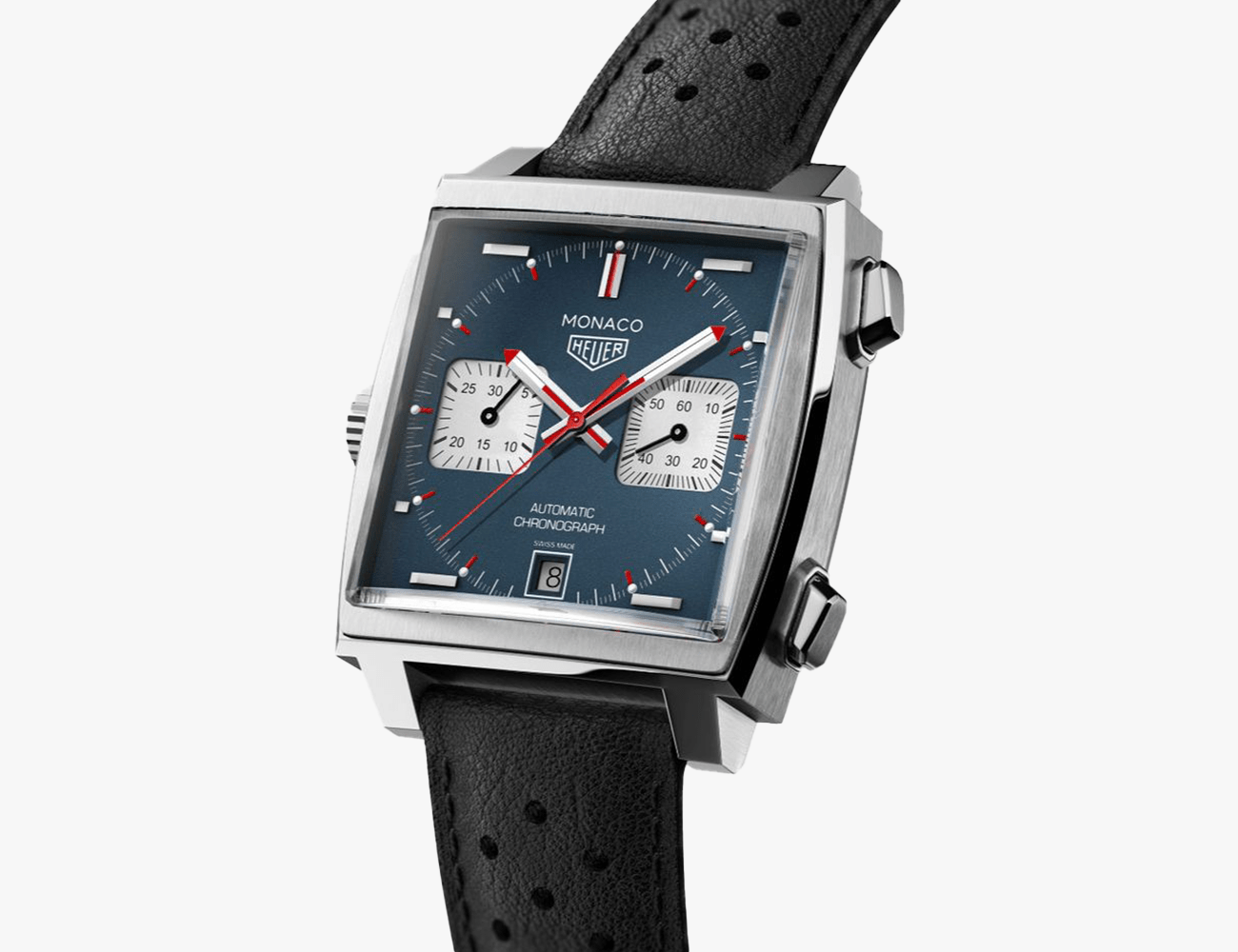 TAG Heuer
TAG HeuerTAG Heuer Monaco
Specs
| Case Size | 39mm |
| Movement | Heuer Calibre 11 automatic chronograph |
| Water Resistance | 100m |
That aforementioned team-up of Breitling and Heuer led to the development of the Calibre 11 “Chronomatic” automatic chronograph movement, and the Monaco, released in 1969, was one of the first watches to house the movement. That alone makes it significant, but there’s a bit more that goes into its icon status.
First and foremost is its distinctive shape. There aren’t many square chronograph watches around today, and that was even more true in 1969, when the Monaco debuted as the world’s first waterproof square watch. Then there’s the Monaco’s greatest claim to fame: Steve McQueen. The late actor, racecar driver and fashion icon wore the Monaco in his racing film Le Mans in 1971, leading to global popularity (and major street cred) for the distinct-looking racing chronograph.
Heuer Carrera
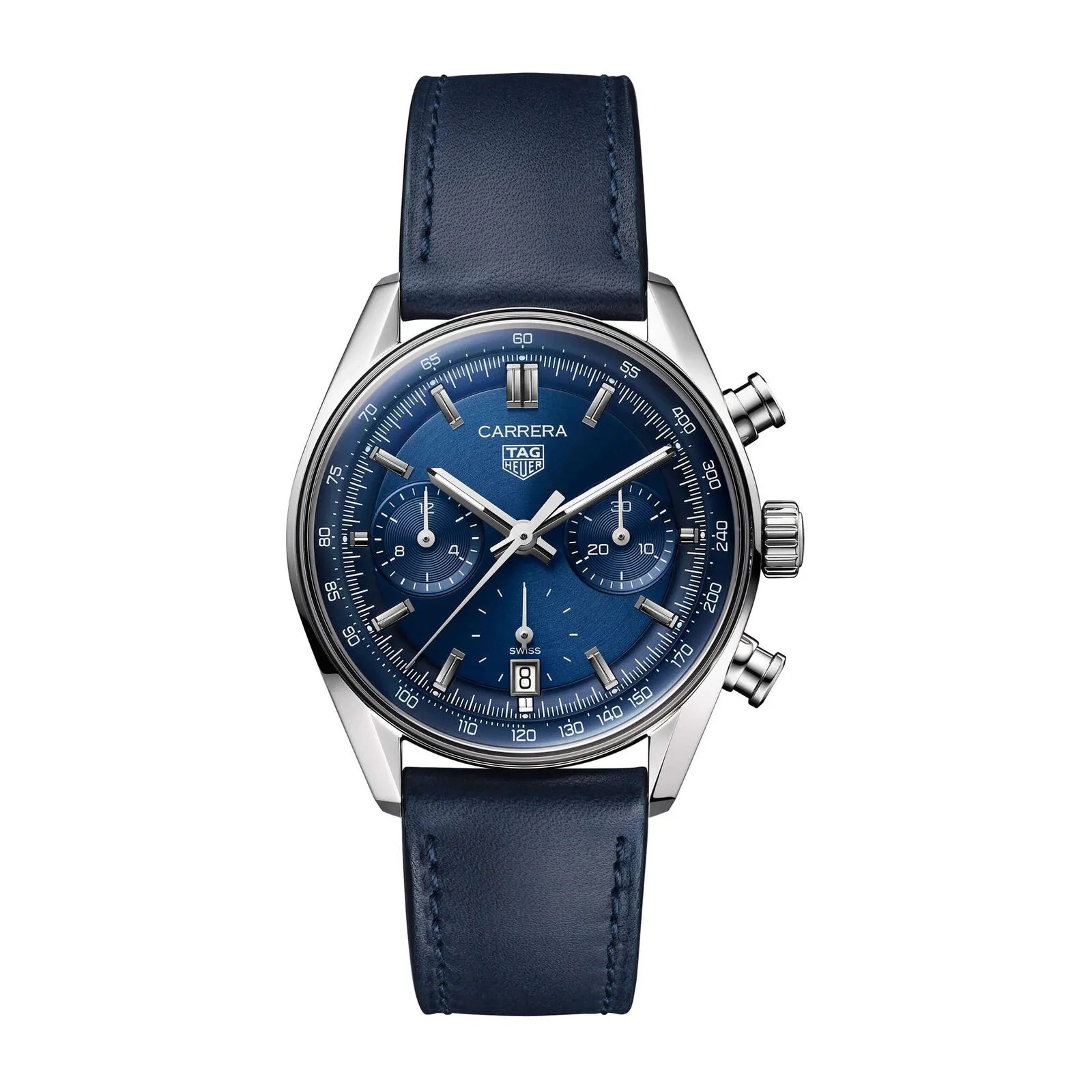 Ben Bridge Jeweler
Ben Bridge JewelerTAG Heuer Carrera Chronograph “Glassbox”
Specs
| Case Size | 39mm |
| Movement | TAG Heuer Cal. TH20-00 automatic chronograph |
| Water Resistance | 100m |
Heuer (which was purchased by the TAG Group holding company in 1985 to become TAG Heuer) has churned out many popular chronographs over the course of its lifetime; especially during its motorsports heyday of the 1960s and ’70s. The Carrera debuted in 1963, and its design was penned by the final scion of the brand’s eponymous family to run the company, Jack Heuer.
Inspired by the modernism of the mid-century, Jack Heuer’s goal for the Carrera was to create a chronograph that was elegant and legible, and he did so by combining a compact case with angled, faceted lugs with a clean, symmetrical dial complete with an exterior 1/5th second track. Those original Carreras remain some of the most beautiful watches ever made, and even 60 years and countless variations later, the model remains a mainstay in TAG Heuer’s collection.
Patek Philippe Perpetual Calendar Chronograph
 Patek Philippe
Patek PhilippePatek Philippe Perpetual Calendar Chronograph Ref. 5270J
Specs
| Case Size | 41mm |
| Movement | Patek Philippe Cal. CH 29‑535 PS Q hand wind perpetual calendar chronograph |
| Water Resistance | 30m |
Up until this point, all of the chronographs we’ve discussed could be described as sporty. But not this one. There is such a thing as a dress chronograph, and Patek’s Grand Complication watches have long been the touchstone for the category. Not only that, but despite far more complicated watches having been produced by plenty of brands, including Patek, variations of this watch remain the ultimate grail for many.
The first Patek Perpetual Calendar Chronograph was the reference 1518 which debuted all the way back in 1941. Over the years as new references were introduced, Patek’s signature complicated watch underwent various changes to the hands, indices, case and pushers. But one thing that has always remained the same is the dial layout, as Patek absolutely nailed it in its first try with the 1518. That original watch established the perfectly beautiful and symmetrical layout of two aperatures below 12 o’clock for the day and month, registers for the chronograph and running seconds at 3 and 9 and a moonphase with date surround at 6. It’s just perfect, and can still be seen on the reference 5270J today.
Breguet Type XX
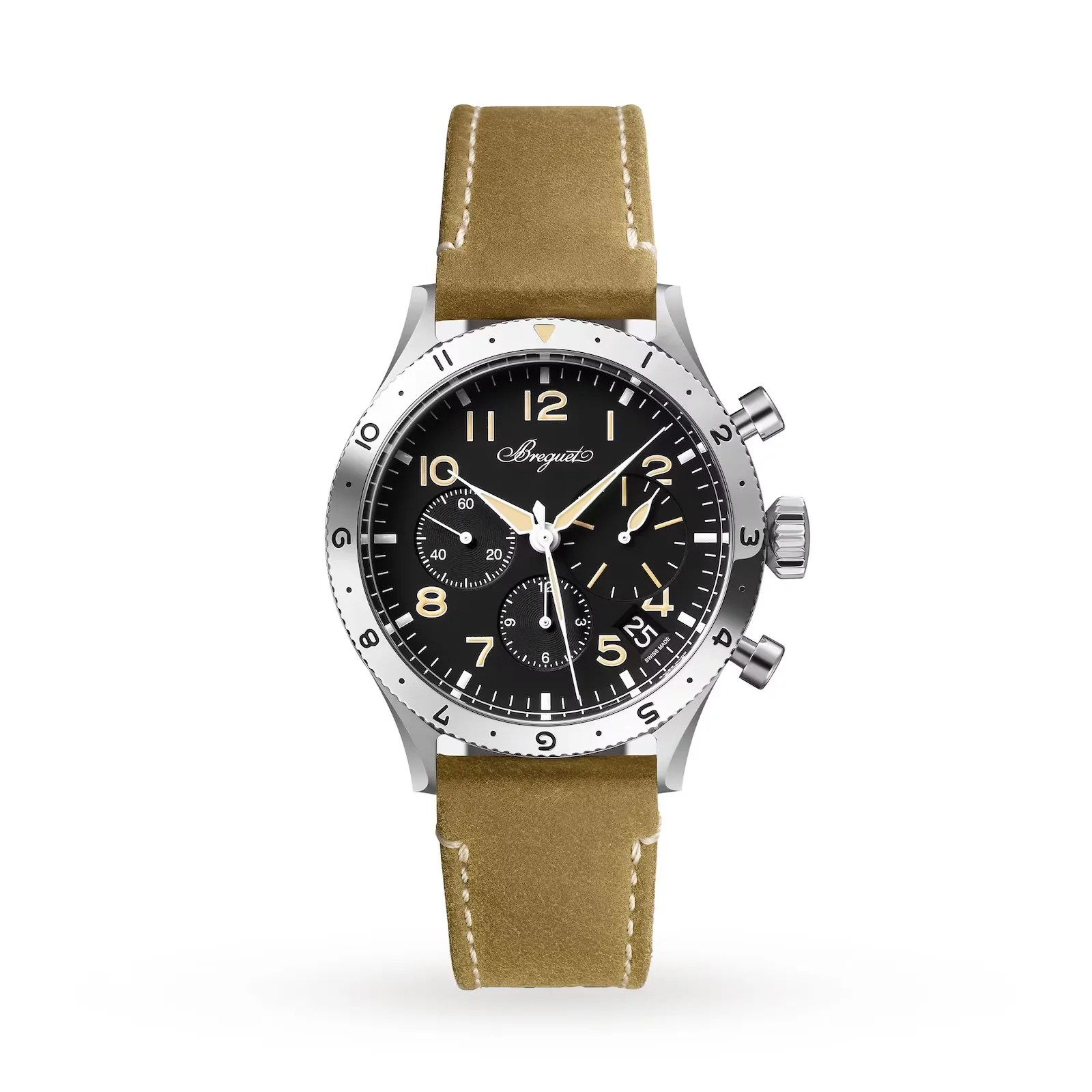 Breguet
BreguetBreguet Type XX
Specs
| Case Size | 42mm |
| Movement | Breguet Cal. 728 automatic flyback chronograph |
| Water Resistance | 100m |
War is hell, but it has historically led to an increase in innovation. That’s especially true in the world of watches, with entire genres like dive watches and field watches being created initially for use by soldiers. The Type 20 chronograph is another watch that got its start for military use but later became a civilian favorite as the Type XX. Both versions shared similar characteristics: a black dial, lumed arabic numerals for indices and a flyback chronograph complication, meaning the chronograph could be reset and restarted instantly with the push of a single button.
The Type 20 was first created by Breguet in 1954 upon a request from the French Ministry of Defense for a specific type of aviator’s chronograph. Breguet, which was still based in France at the time (the brand today is based in Switzerland), supplied various departments of the French military with Type 20 flyback chronographs throughout the decade. A handful of other brands also produced Type 20s for the French armed forces, including Mathey-Tissot, Auricoste, Vixa and Dodane. Breguet produced the civilian Type XX sporadically over the ensuing decades, and brought both styles back in 2023.
IWC Portugieser Chronograph
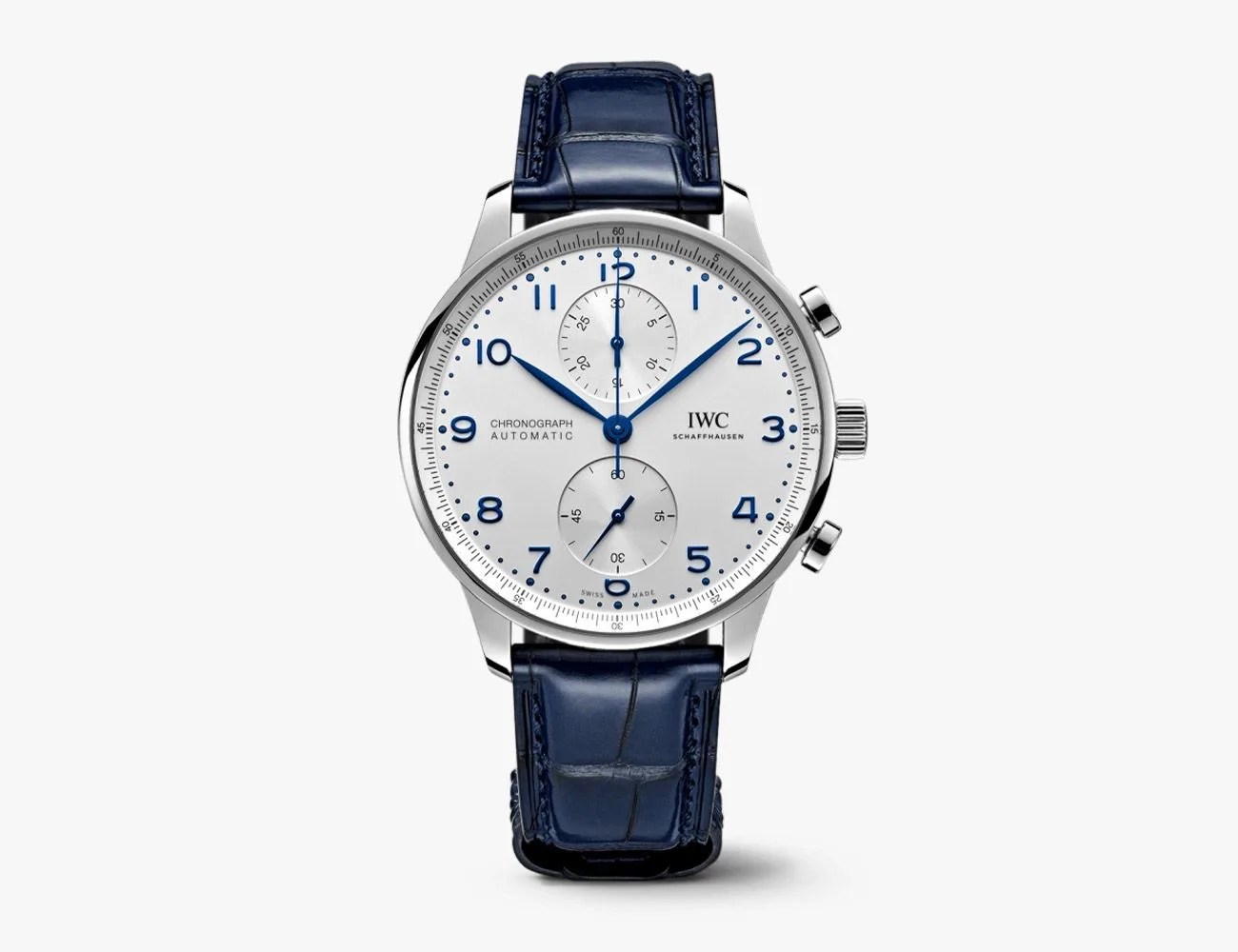 Courtesy
CourtesyIWC Portugieser Chronograph
Specs
| Case Size | 41mm |
| Movement | IWC Cal. 69355 automatic chronograph |
| Water Resistance | 30m |
By far the newest watch in this guide, the chronograph version of IWC’s Portugieser line only debuted in 1995 (as a higher-end flyback version). But in short manner, the watch has gone on to become not only one of IWC’s most recognized models, but also one of the best-known and most popular chronographs anywhere. That’s largely due to the way it looks. The watch is undeniably gorgeous, with its trademark subdials at 12 and 6 providing perfect balance to the expansive, marine chronometer-influenced dial.
The Portugieser line as a whole dates back much further, however, tracing its lineage to 1939. It was then that IWC created an oversized wristwatch powered by a pocket watch movement at the request of a pair of Portuguese sailors who wanted wristwatches that were as precise as marine chronometers. The brand resurrected the line with a time-only version in 1993 and two years later gave us the chrono, which today stands as the best-known version of the model line.
Seiko 6139-6005
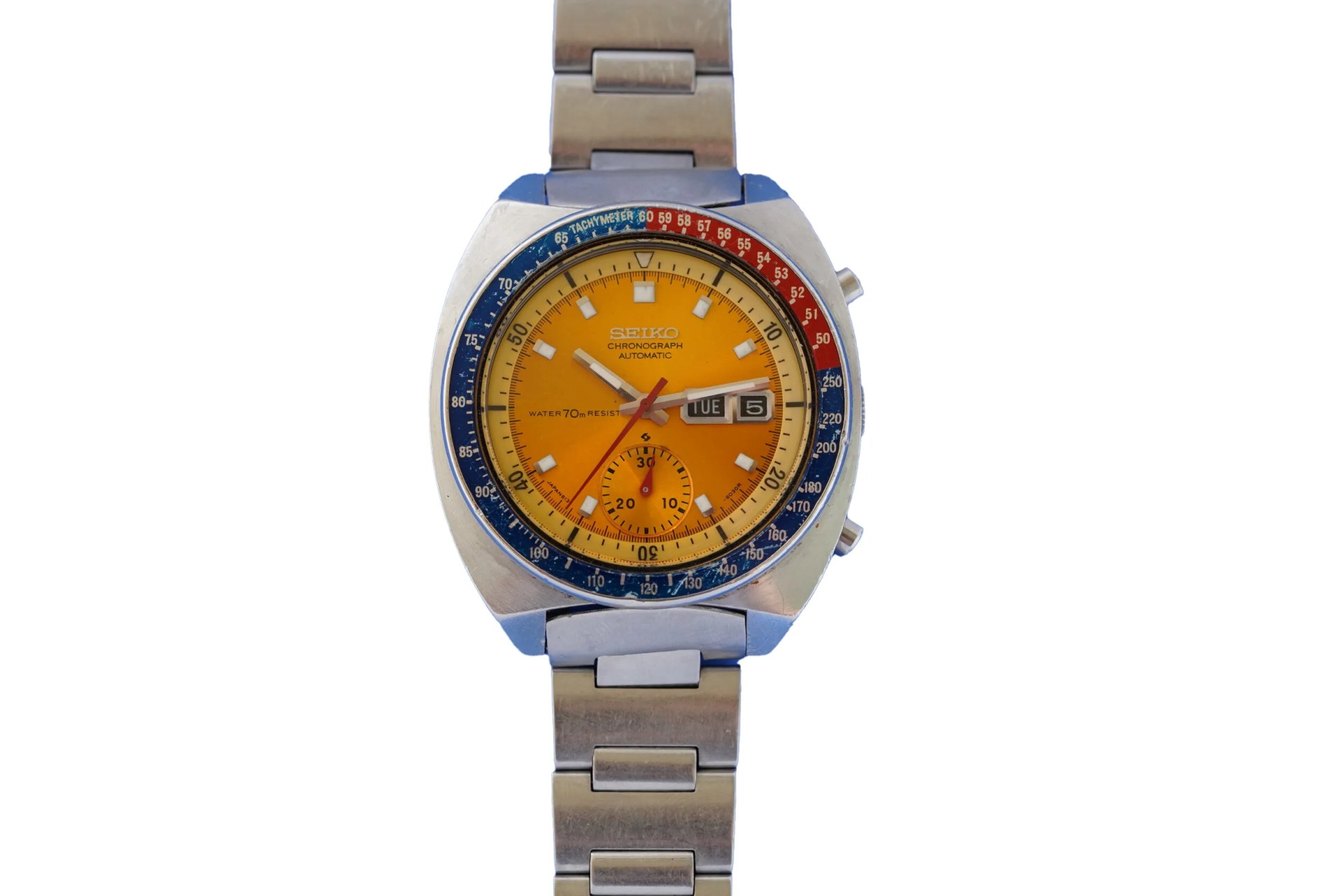 Wind Vintage
Wind VintageSeiko 6139 Speedtimer “Pogue”
Specs
| Case Size | 41mm |
| Movement | Seiko Cal. 6139 automatic chronograph |
| Water Resistance | 70m |
Japanese watch fans, your moment has arrived. After wading through nine Swiss chronographs, you’ve finally reached a Seiko. And it is some Seiko. As mentioned several spots up, Seiko was one of three contenders to create the world’s first automatic chronograph in 1969. (Seiko also created the world’s first quartz watch that same year — talk about ending the ’60s with a bang.) The movement Seiko ultimately released in ’69 was the Calibre 6139, an integrated, column-wheel automatic chronograph.
The movement found its way into a number of different watches, many of which fell under the Speedtimer family. But the reference 6139-6005 is the one that has earned the right to be called Seiko’s most iconic, as it lays claim to fame basically everything an iconic chrono should: an important movement, a motorsports connection and an outer space milestone. We’ve already gone over the importance of the movement. The dark-blue dial version was worn by legendary French F1 driver François Cevert. And finally, the most-famous yellow style became the first automatic chronograph worn in outer space when NASA astronaut Col. William Pogue wore his personal 6139-6005 during the 1973 Skylab 4 mission.

